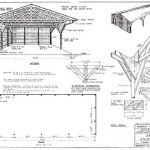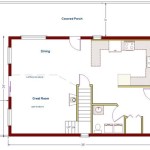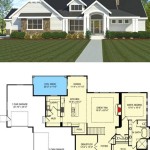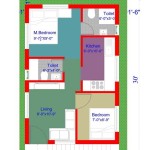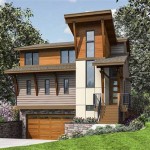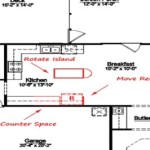Home Building Plans With Basement: Expanding Potential and Value
Home building plans with basements offer a significant opportunity to expand living space and enhance property value. Incorporating a basement into a new construction project requires careful consideration of various factors, including soil conditions, local building codes, and intended use. A well-designed basement can serve as a versatile area, accommodating recreational activities, home offices, additional bedrooms, or dedicated storage.
The choice to include a basement in home building plans has numerous implications for the overall design and construction process. It affects the foundation, drainage systems, and structural integrity of the entire house. Therefore, thorough planning and engagement with experienced architects and contractors are crucial for a successful basement build.
This article aims to provide an informative overview of home building plans with basements, covering essential aspects such as design considerations, construction techniques, and potential benefits.
Key Point 1: Design Considerations for Basements
Designing a basement effectively requires a comprehensive understanding of the homeowner's needs and preferences, as well as the specific site conditions. Several design considerations are paramount to creating a functional and comfortable basement space.
Space Planning: The intended use of the basement significantly influences the floor plan. A recreation room benefits from an open layout, while a home office may require smaller, enclosed spaces for privacy. When allocating space, it is crucial to consider natural light and ventilation. Egress windows, which provide an escape route in case of emergencies, are particularly important in basement bedrooms.
Lighting and Ventilation: Basements often lack natural light, making artificial lighting essential. Recessed lighting, task lighting, and accent lighting can create a bright and inviting atmosphere. Proper ventilation is also necessary to prevent moisture buildup and ensure air quality. Dehumidifiers and exhaust fans can help maintain a comfortable humidity level.
Waterproofing and Drainage: Preventing water infiltration is a critical aspect of basement design. Effective waterproofing measures include exterior foundation coatings, interior sealant applications, and adequate drainage systems. A perimeter drain system, installed around the foundation's exterior, collects groundwater and directs it away from the house. Sump pumps may also be necessary in areas with high water tables to remove any accumulated water.
Structural Integrity: The basement walls must be structurally sound to support the weight of the house above. Reinforced concrete walls are a common choice, providing strength and durability. The design should also account for potential soil pressure and seismic activity to ensure long-term stability. A structural engineer can assess the site conditions and recommend appropriate foundation design elements.
Accessibility: The means of accessing the basement is a crucial design consideration. Interior staircases provide direct access from the main living areas, while exterior entrances, such as walk-out basements, offer independent access. Walk-out basements are particularly beneficial for properties with sloping terrain, as they allow for more natural light and ventilation.
Local Building Codes: It is imperative to comply with local building codes and regulations when designing a basement. These codes often specify requirements for ceiling height, egress windows, fire safety, and ventilation. Failure to adhere to these codes can result in delays, fines, and the need for costly modifications.
Key Point 2: Construction Techniques for Basement Builds
Constructing a basement involves a series of specialized techniques and procedures to ensure a structurally sound and watertight space. The construction method depends on factors such as soil type, water table level, and the overall design of the house.
Excavation: The first step in basement construction is excavating the soil to create the desired depth. During excavation, it is essential to manage the soil properly, following local regulations and preventing erosion. Support structures such as shoring or trench boxes may be required to prevent the excavation walls from collapsing.
Foundation Walls: Concrete foundation walls are the most common type used in basement construction. The walls are typically poured using forms, which are temporary structures that hold the concrete in place until it hardens. Reinforced concrete, which incorporates steel reinforcing bars, provides additional strength and resistance to cracking. The thickness of the walls depends on the height of the basement and the soil pressure it must withstand.
Waterproofing: Exterior waterproofing involves applying a protective coating to the outside of the foundation walls. This coating prevents water from penetrating the concrete and entering the basement. Common waterproofing materials include asphalt-based coatings, elastomeric membranes, and bentonite clay. The application should extend from the footing up to the ground level to provide a continuous barrier.
Drainage Systems: Perimeter drain systems are installed around the foundation's exterior to collect groundwater and direct it away from the house. These systems typically consist of perforated pipes surrounded by gravel, which allows water to flow freely. The pipes are sloped to drain into a sump pit, where a sump pump can remove any accumulated water.
Backfilling: Once the foundation walls are in place and the waterproofing and drainage systems are installed, the excavated soil is backfilled around the foundation. The backfilling process should be done in layers, compacting each layer to prevent settling and ensure proper drainage. Proper compaction is essential to prevent water from accumulating against the foundation walls.
Slab Construction: The basement slab, or floor, is typically made of concrete. Before pouring the slab, a layer of gravel is placed to provide drainage and prevent moisture from wicking up through the concrete. A vapor barrier, such as polyethylene sheeting, is also installed to further prevent moisture penetration. The concrete should be properly cured to ensure its strength and durability.
Framing and Finishing: After the concrete slab is poured, the interior walls of the basement can be framed using wood or steel studs. Insulation is installed between the studs to improve energy efficiency and reduce noise transmission. The walls are then covered with drywall or other finishing materials. Electrical wiring, plumbing, and HVAC systems are also installed during this phase of construction.
Key Point 3: Benefits of Home Building Plans with Basements
The inclusion of a basement in home building plans presents a range of potential benefits, enhancing the functionality, value, and overall appeal of a property.
Increased Living Space: A basement provides additional living space that can be used for various purposes, such as a recreation room, home office, guest suite, or gym. This extra space can significantly improve the quality of life for the occupants and accommodate their changing needs over time. A finished basement can effectively double the living area of a house without significantly expanding the footprint of the ground floor structure.
Enhanced Property Value: Adding a finished basement to a home can significantly increase its market value. Potential buyers often appreciate the extra space and versatility that a basement provides. A well-designed and properly finished basement can be a major selling point, especially in areas where land is scarce or expensive.
Storage Capacity: Basements offer ample storage space for items that are not frequently used, such as seasonal decorations, sports equipment, and household supplies. A well-organized basement storage area can help declutter the main living areas of the house and improve overall organization.
Storm Shelter: In areas prone to severe weather, a basement can serve as a safe and secure storm shelter. The underground location provides protection from high winds, tornadoes, and other weather-related hazards. Reinforcing the basement walls and installing a secure door can further enhance its effectiveness as a storm shelter.
Temperature Regulation: Due to its underground location, a basement tends to maintain a relatively stable temperature throughout the year. This can help reduce heating and cooling costs, as the basement acts as a buffer against extreme temperature fluctuations. A well-insulated basement can further improve energy efficiency.
Utility Access: Basements often house essential utilities such as the furnace, water heater, and electrical panel. This provides easy access for maintenance and repairs. However, it is important to ensure that these utilities are properly installed and maintained to prevent safety hazards.
Privacy and Sound Isolation: Basements can provide a greater degree of privacy and sound isolation compared to other parts of the house. This makes them ideal for activities that require quiet, such as home offices, music rooms, or bedrooms. The underground location helps to dampen outside noise and create a more peaceful environment. However, proper soundproofing measures, such as insulation and sound-dampening drywall, may be necessary to achieve optimal results.

Simple House Floor Plans 3 Bedroom 1 Story With Basement Home Design 1661 Sf Basementdesignflo One New

Stylish And Smart 2 Story House Plans With Basements Houseplans Blog Com

Photos Of Plan 1117 The Clarkson Basement Floor Plans House

Hillside House Plan Modern Daylight Home Design With Basement

Stylish And Smart 2 Story House Plans With Basements Houseplans Blog Com

Don Gardner Walkout Basement House Plans Blog Eplans Com

Basement Floor Plans Types Examples Considerations Cedreo

Don Gardner Walkout Basement House Plans Blog Eplans Com

Simple House Floor Plans 3 Bedroom 1 Story With Basement Home Design Created Via Https Pinthem

Stylish And Smart 2 Story House Plans With Basements Houseplans Blog Com

